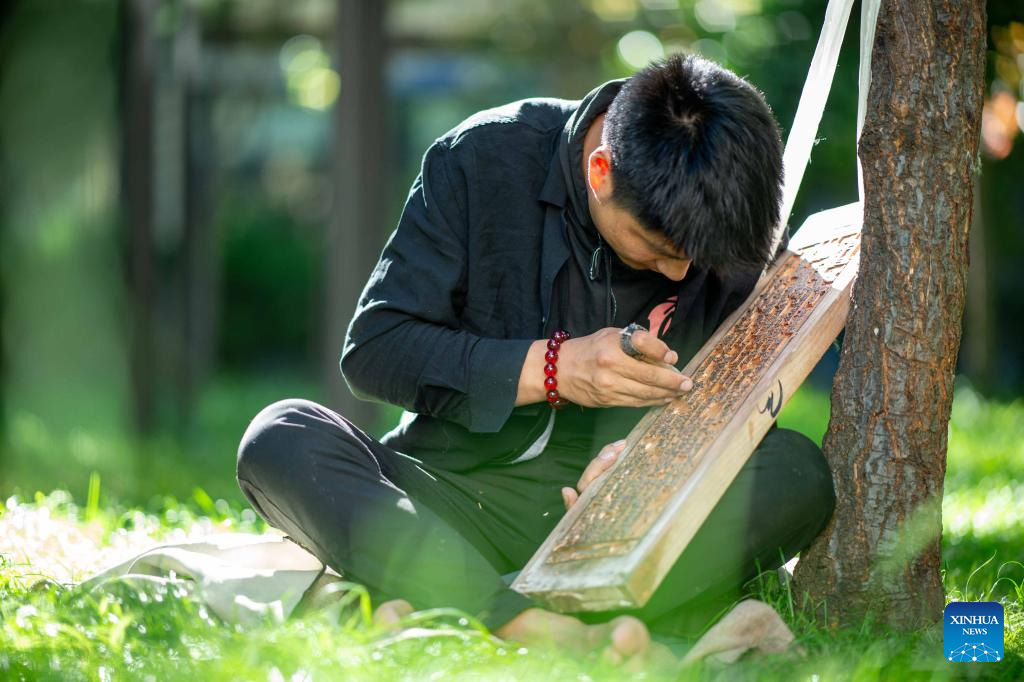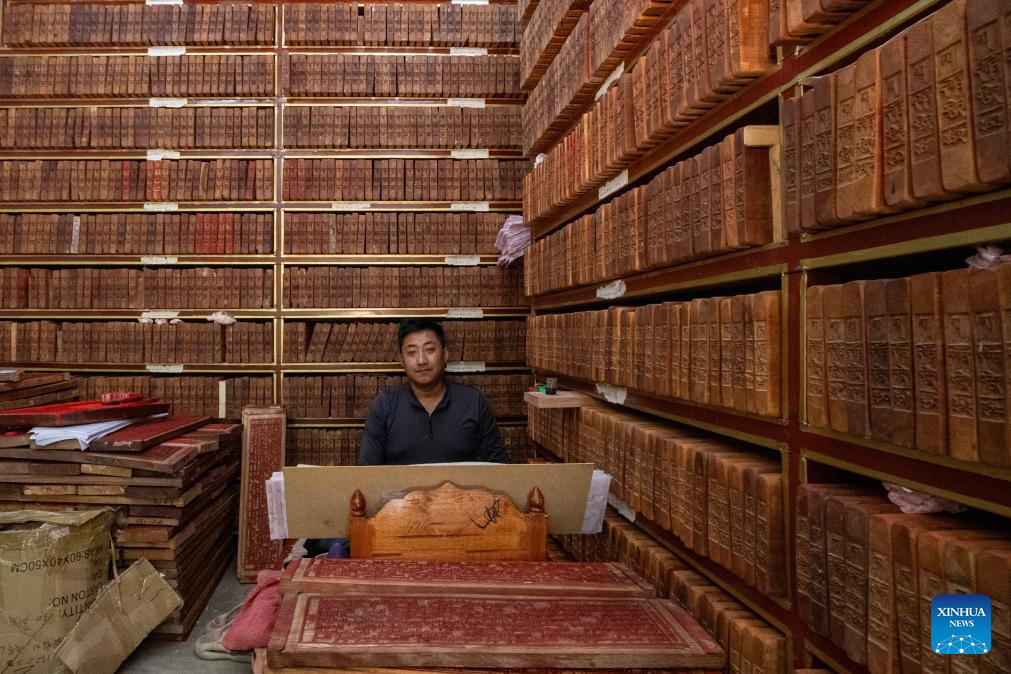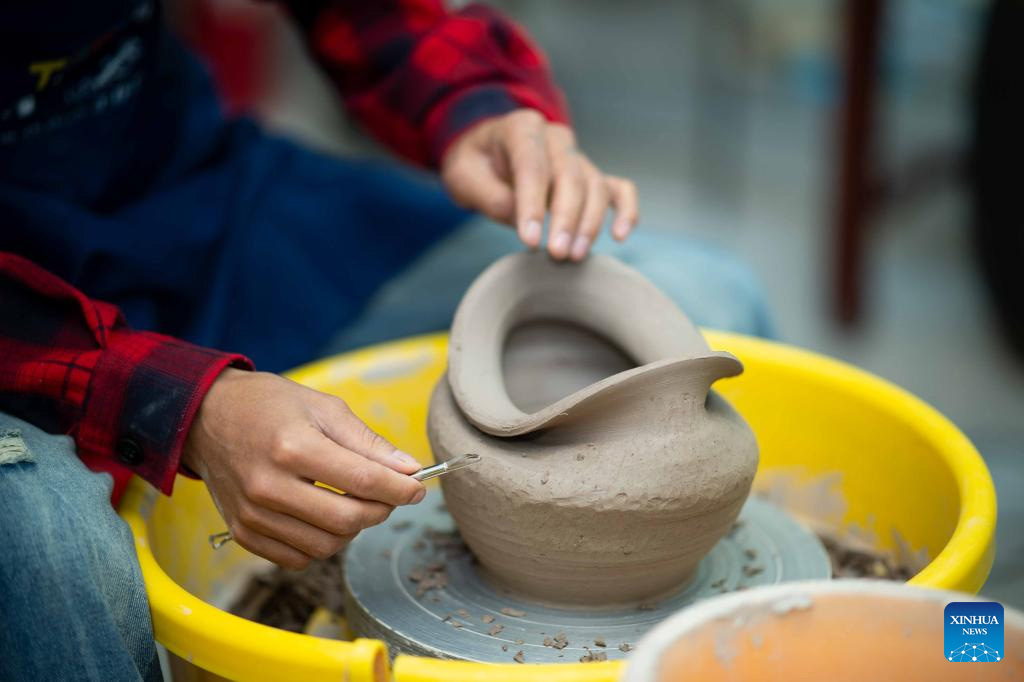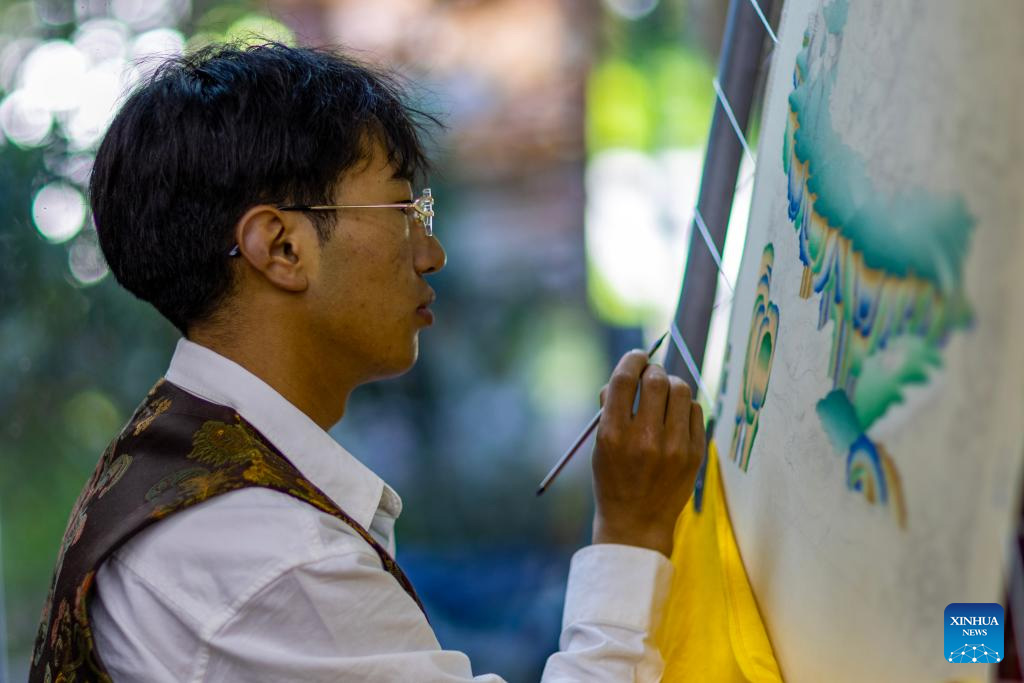China's Xizang improves protection of intangible cultural heritage

A carver with Tibetan woodblock art, a regional intangible cultural heritage, works in Lhasa, southwest China's Xizang Autonomous Region, Aug. 6, 2025.
The protection of intangible cultural heritage in Xizang has steadily improved, with 473 million yuan (about 66 million U.S. dollars) from the central and regional governments earmarked from 2012 to 2024 for the protection of intangible cultural heritage items on the national representative list and other related fields, according to a white paper issued this year. (Xinhua/Tenzing Nima Qadhup)

A painter creates a Tibetan Thangka painting, a national intangible cultural heritage, in Lhasa, southwest China's Xizang Autonomous Region, Aug. 6, 2025.
The protection of intangible cultural heritage in Xizang has steadily improved, with 473 million yuan (about 66 million U.S. dollars) from the central and regional governments earmarked from 2012 to 2024 for the protection of intangible cultural heritage items on the national representative list and other related fields, according to a white paper issued this year. (Xinhua/Tenzing Nima Qadhup)

A carver with traditional Tibetan carving restoration technique, a regional intangible cultural heritage, poses for a photo in Lhasa, southwest China's Xizang Autonomous Region, Aug. 6, 2025.
The protection of intangible cultural heritage in Xizang has steadily improved, with 473 million yuan (about 66 million U.S. dollars) from the central and regional governments earmarked from 2012 to 2024 for the protection of intangible cultural heritage items on the national representative list and other related fields, according to a white paper issued this year. (Xinhua/Jiang Fan)

A potter makes a piece of traditional Tibetan pottery, a regional intangible cultural heritage, in Lhasa, southwest China's Xizang Autonomous Region, Aug. 6, 2025.
The protection of intangible cultural heritage in Xizang has steadily improved, with 473 million yuan (about 66 million U.S. dollars) from the central and regional governments earmarked from 2012 to 2024 for the protection of intangible cultural heritage items on the national representative list and other related fields, according to a white paper issued this year. (Xinhua/Tenzing Nima Qadhup)

A painter creates a Tibetan Thangka painting, a national intangible cultural heritage, in Lhasa, southwest China's Xizang Autonomous Region, Aug. 6, 2025.
The protection of intangible cultural heritage in Xizang has steadily improved, with 473 million yuan (about 66 million U.S. dollars) from the central and regional governments earmarked from 2012 to 2024 for the protection of intangible cultural heritage items on the national representative list and other related fields, according to a white paper issued this year. (Xinhua/Jiang Fan)

A carver with traditional Tibetan carving restoration technique, a regional intangible cultural heritage, works in Lhasa, southwest China's Xizang Autonomous Region, Aug. 6, 2025.
The protection of intangible cultural heritage in Xizang has steadily improved, with 473 million yuan (about 66 million U.S. dollars) from the central and regional governments earmarked from 2012 to 2024 for the protection of intangible cultural heritage items on the national representative list and other related fields, according to a white paper issued this year. (Xinhua/Tenzing Nima Qadhup)
Photos
Related Stories
- Young voices carry Tibetan opera's ancient echoes
- Xizang Story: Researcher opens up digital future of ancient Tibetan script
- Hospitals nationwide deploy over 2,000 experts to assist medical institutions in Xizang
- First batch of quake-affected residents move into new homes in Xizang
- Paired assistance program improves access to quality health care for Xizang residents
Copyright © 2025 People's Daily Online. All Rights Reserved.









